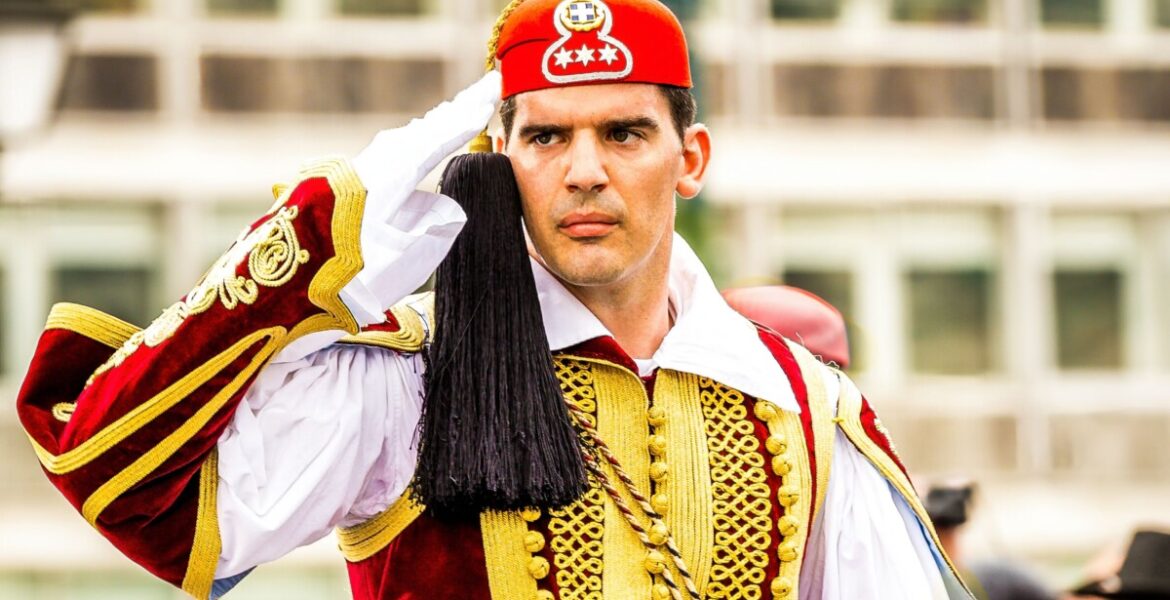The Greek Presidential Guard (Evzones) is a potent symbol of Athens, Attica, and the entire nation of Greece. In this article, we shall delve into deciphering the significance of the Evzones, the profound meaning behind their distinctive uniform, and an in-depth guided tour around the Garrison with the current Commander.
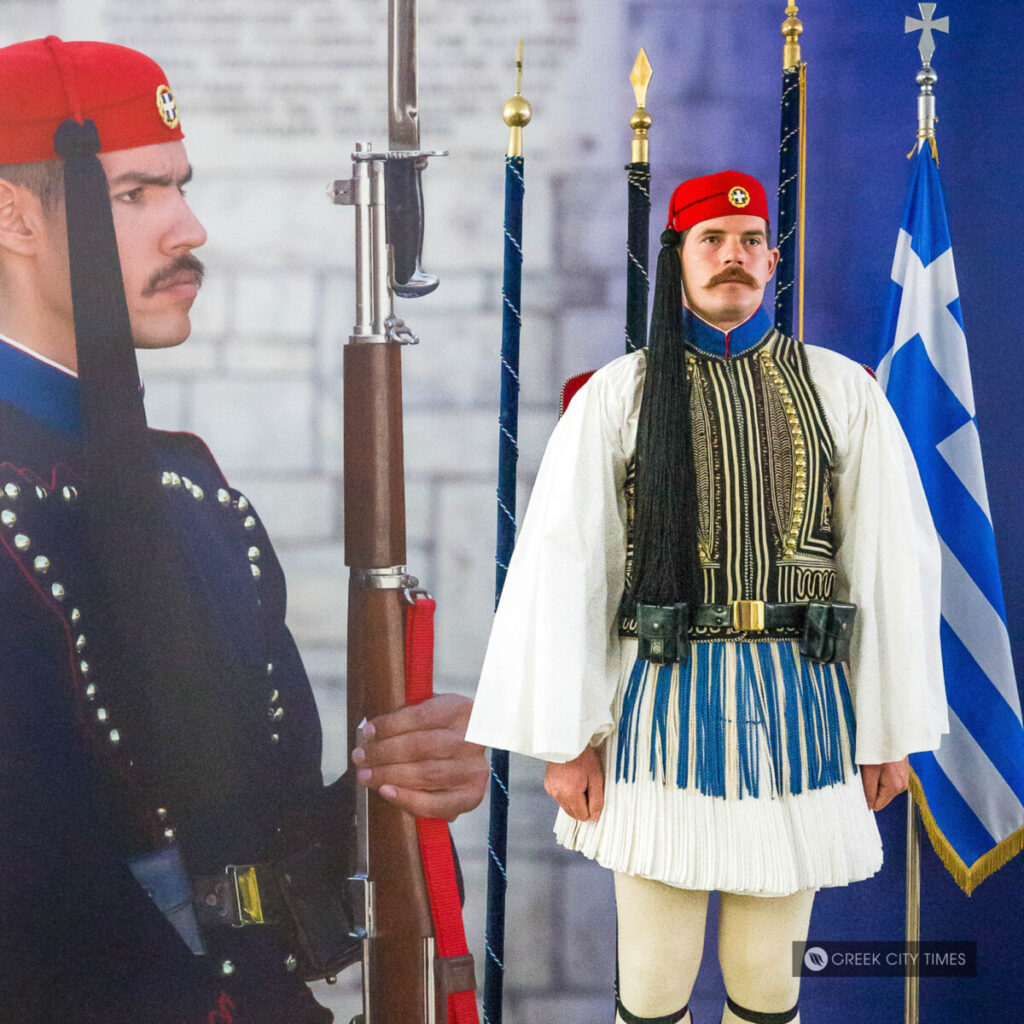
The term Evzones means “well-girt” man and implies an elite guard status; they are an esteemed cadre of elite Greek soldiers who undergo rigorous training to master diverse ceremonial responsibilities. Their duties encompass safeguarding the Tomb of the Unknown Soldier and the Presidential Mansion and the weekly flag-raising and lowering at the Acropolis and on National Holidays. We explore the legacy and dedication of these revered guards who embody Greece's historical journey and are Greece's "Favourite Sons."
The origins of the Greek Presidential Guard, known as the "Proedrikí Frourá" in Greek, date back over 150 years to December 12, 1868, when it was officially established within the modern Greek state. Initially named the "Agema," this renowned military unit came into existence through a royal decree. The Greek Presidential Guard takes pride in being the final bastion of the Evzones tradition within the Greek Army—a legacy of elite light infantry and mountain units celebrated for their hard-fought triumphs against the nation's adversaries.
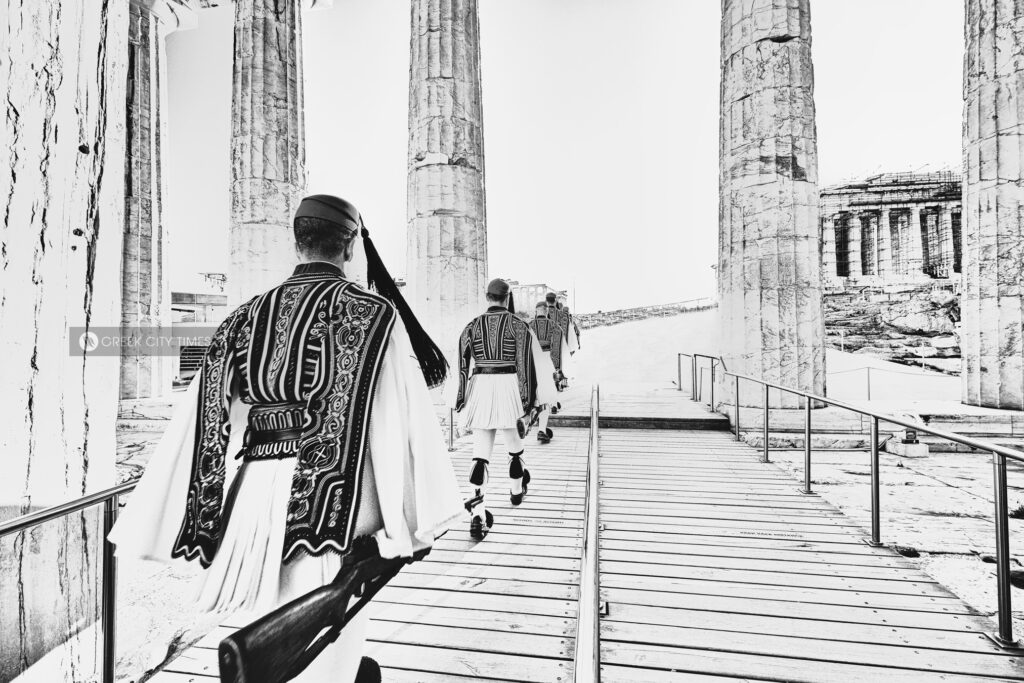
The Evzones were established as a regiment for the first time in 1868 as four battalions. Throughout the Balkan Wars and all significant engagements and military conflicts of the 20th century, they distinguished themselves for their fighting spirit. The Evzones were viewed as heroes by all Greeks as a result. A unique organisation, then known as the "Palace Guard"—the forerunner of today's Presidential Guard—was established in 1914.
Over time and in response to shifts in the country's governance, the military unit underwent name changes. These included designations such as the "Royal Guard Company" in 1940, the "Guard of Honor of the Unknown Soldier" in 1941, the "Flag Guard" in 1942, and finally, the "Royal Guard" in 1946. Despite these alterations in terminology, the unit's honourable mission of safeguarding the Palace and the Tomb of the Unknown Soldier remained unwavering.
Since the restoration of democracy in Greece in 1974, the unit has been officially known as the "Presidential Guard," with its role now solely ceremonial. The Presidential Guard operates under the supervision of the Military Office of the Presidency of the Hellenic Republic.
Whether you've explored Athens firsthand or researched the city's top attractions, the Evzones are likely familiar to you. Greece's esteemed Greek Presidential Guard, also previously referred to as Tsoli. This derogatory term is not used today as it comes from the Turkish word "Cul", which literally translates to rag and implies dirty and cheap. Initially tasked with safeguarding the nation's borders, they have evolved into an elite ceremonial unit. Their presence is undeniably captivating. While they may not readily pose for photos, images of these individuals abound, making them quite possibly the second most captured spectacle in Athens, following the iconic Parthenon.
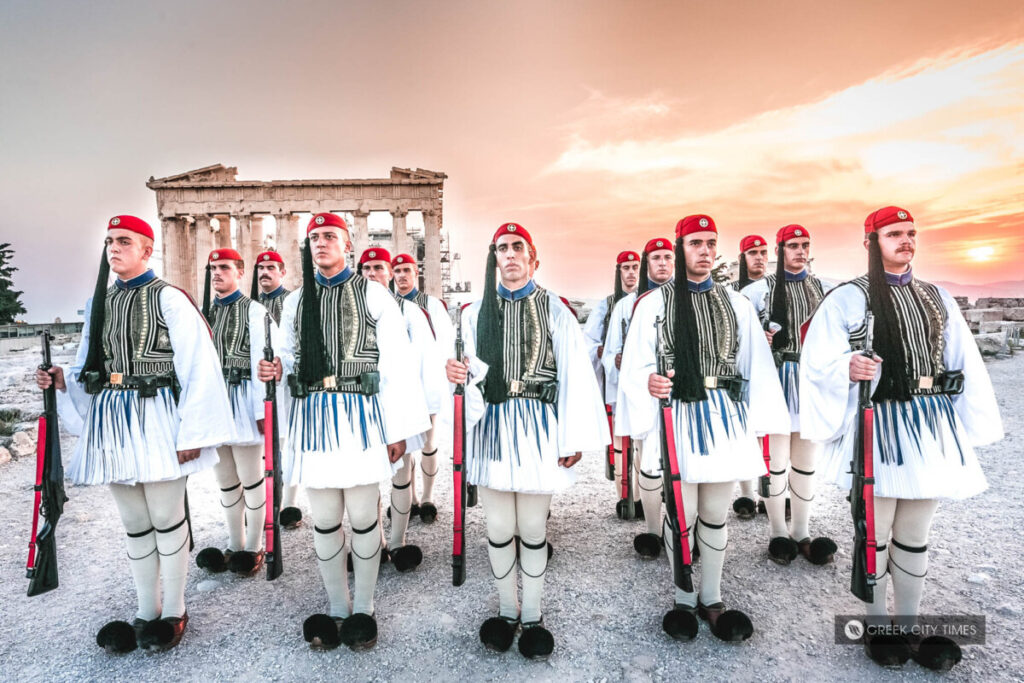
Dressing in the fustanella, a kilt-like garment, and sporting the iconic red leather clogs adorned with black pompoms known as Tsarouhia, these young Greek soldiers possess a level of determination that surpasses most individuals worldwide. Their physical prowess and impeccable health testify to their remarkable commitment; this journey leads one to voluntarily undergo such demanding training, transforming into an unwavering, motionless foot-soldier dedicated to honouring those who sacrificed for their country's freedom.
The path commissioned officers assigned to the Presidential Guard is entirely different from that of the evzones serving their military service through the ranks of the Presidential Guard. The evzones do their 9- or 12-month mandatory service and are then discharged. They do not rise through the ranks to become commissioned officers.
Colonel Ilias Karmiris is the current Commander of the Garrison (The Evzones Headquarters). As you read on, we were given a personal tour around the headquarters to discover what it truly takes to join the ranks of the Evzones and how this elite unit operates.
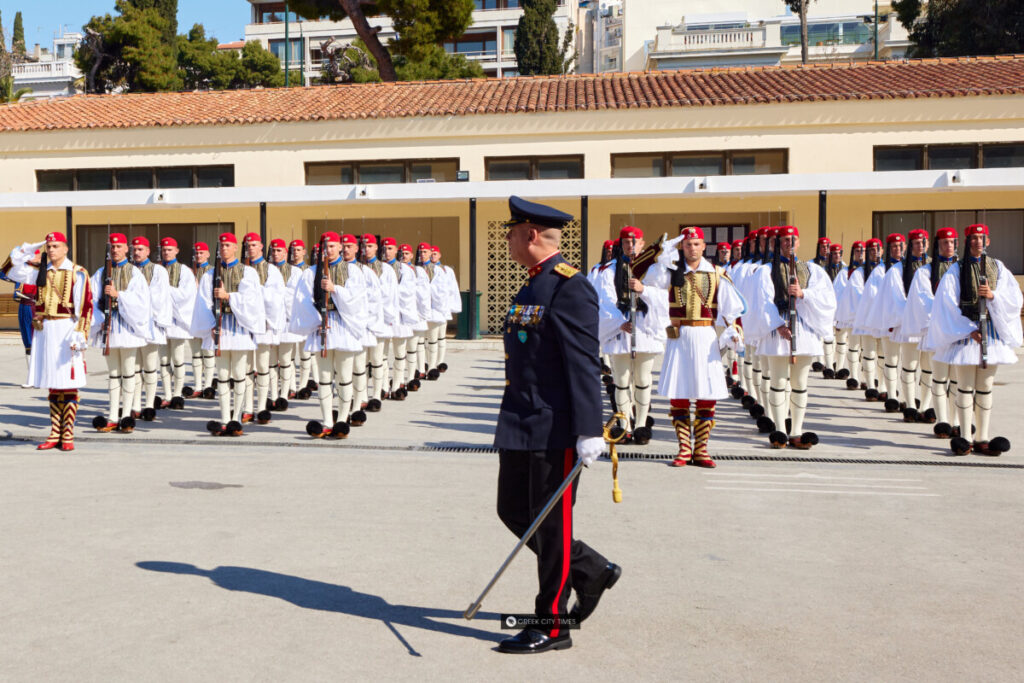
Only around 30% of individuals who attempt to become an Evzone succeed; it is challenging. As a requirement and the first step towards becoming an Evzone, all male Greeks are required to serve in the military for twelve months, which has recently been increased from nine months. Then, it would be best if you were taller than 1.87 m (6' 2") but under 2.05 m (6' 8"), healthy and free of any surgery because the exercise program is quite demanding and uncomfortable on the body. Plus, you must not have any tattoos that can be seen, and you must be an Orthodox Christian.
Once accepted, you must endure a 40-day, excruciatingly painful training course, which is physically and mentally demanding. The most crucial thing you must be aware of is that being an Evzone requires intense passion and dedication to your objective. Your soul and willpower take over and help you overcome all the difficulties when you feel like your body can no longer handle the intense exercises. The training is top secret and not disclosed to the public, but we were told one of the most straightforward workouts is to remain still for four hours without moving, not even your eyes. Once accepted, the Evzone serves for nine months.
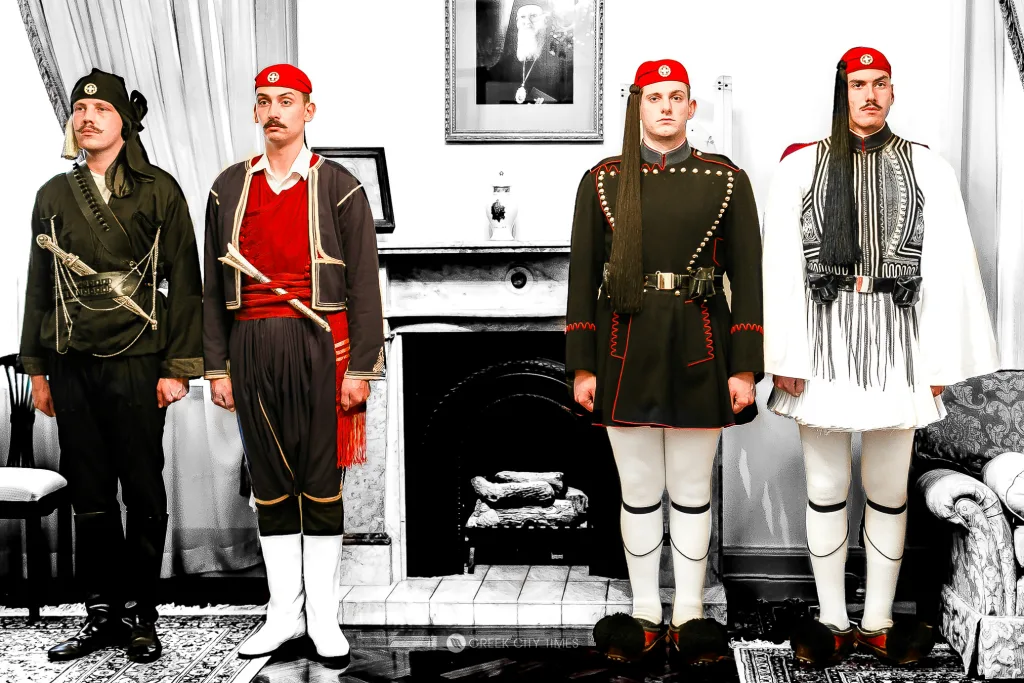
A typical day of being an Evzone commences promptly at 6 o'clock, with the luxury of sleep graces for two to three hours, a testament to many responsibilities. The mornings initiate a sequence of meticulous preparations involving uniforms and gear, and each Evzone must shave a remarkable four (maybe even six) times a day. Every Evzone has a partner serving as both a mirror and a confidant, a bond akin to that of siblings. Following the readiness, they engage in paired training sessions spanning 5 to 6 hours.
Every action undertaken is orchestrated in unison. Following these intensive sessions, they assume the regular posts at the Tomb of the Unknown Soldier on Syntagma Square or the Presidential Mansion. The rhythm of the vigil stretches for an hour per shift, with each pair assuming four changes daily, a rotation that cycles every six hours.
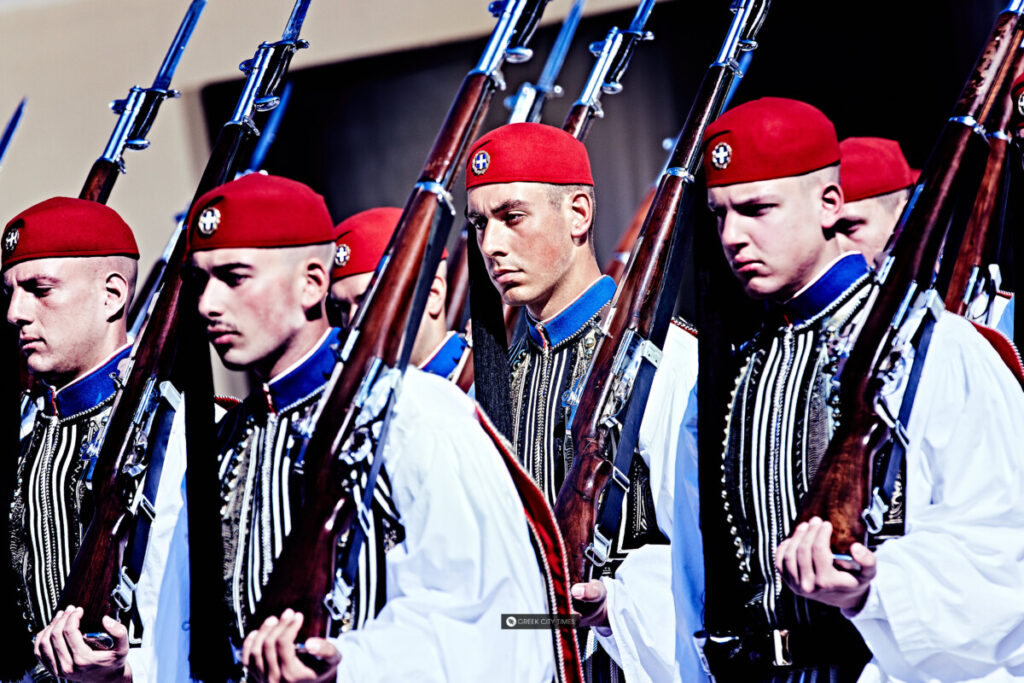
The Evzones astonish onlookers, both Greeks and foreign visitors to Attica, with their imposing stature, their perfectly timed movements, and their lofty pace, but above all, with the look in their eyes, a sign of determination and strength, they stand still, silent and severe at the Tomb of the Unknown Soldier on Vassilissis Sofias street, a monument that is guarded 24/7, 365 days and nights a year in rain snow and sunshine, and is dedicated to those who gave their lives and fought for the country, plus at the Presidential Mansion. The iconic Greek Presidential Guard has been the nation's highest honour guard for over 150 years, representing Greece's freedom battles with tenacity, bravery, and pride.
The Changing of the Guards ceremony in Athens occurs directly in front of the Greek Parliament and the Tomb of the Unknown Soldier. The grand neoclassical structure housing the Greek Parliament was originally constructed in the 1830s as the residence of King Otto and Queen Amalia. In 1843, the royal couple occupied the building, and subsequent kings and queens made it their home. The Greek Parliament commenced its operations within the Palace in 1935.
The Tomb of the Unknown Soldier, built between 1929 and 1930, stands as a solemn tribute to all those who made the ultimate sacrifice while defending Greece. The Evzones vigilantly guard this sacred monument, referred to as the Guards in Greek. Remarkably, the Tomb itself is empty, resembling a cenotaph, in keeping with the ancient Greek tradition.

The Evzone stands immobile in front of the Hellenic Parliament and the Monument to the Unknown Soldier while wearing an exceptionally bulky and stiff uniform. Even in the event of an attack or danger, The Evzone is not supposed to respond. This is why the observer's role is so crucial. The Greek lizard camo-patterned uniform soldier monitors the guards and ensures their safety. The Evzone taps his rifle on the ground in crises and situations requiring the observer's assistance. When the observer gets close, they communicate with their eyes via a hidden system of subliminal cues, blinking once for ‘yes,’ twice for ‘no,’ and three times for ‘I don’t know.’
In addition to the total stillness, the Evzones face a significant difficulty from their distinctive speed, which is unique to each ceremony and necessitates precise synchronicity. Symbolism abounds in the movements made during the Changing of the Guard. Raising and stretching the leg is a "re-enactment" of kicking the adversary when engaging in hand-to-hand combat. The foot bows to the dead and then firmly pushes backwards, expelling the 400 years of enslavement that are now behind it. The placement of the two legs side by side represents the unification of Greece.
Evzones form the Greek letter “O” from the Greek word “No” (Greek: “Όχι”) with their arms and legs.
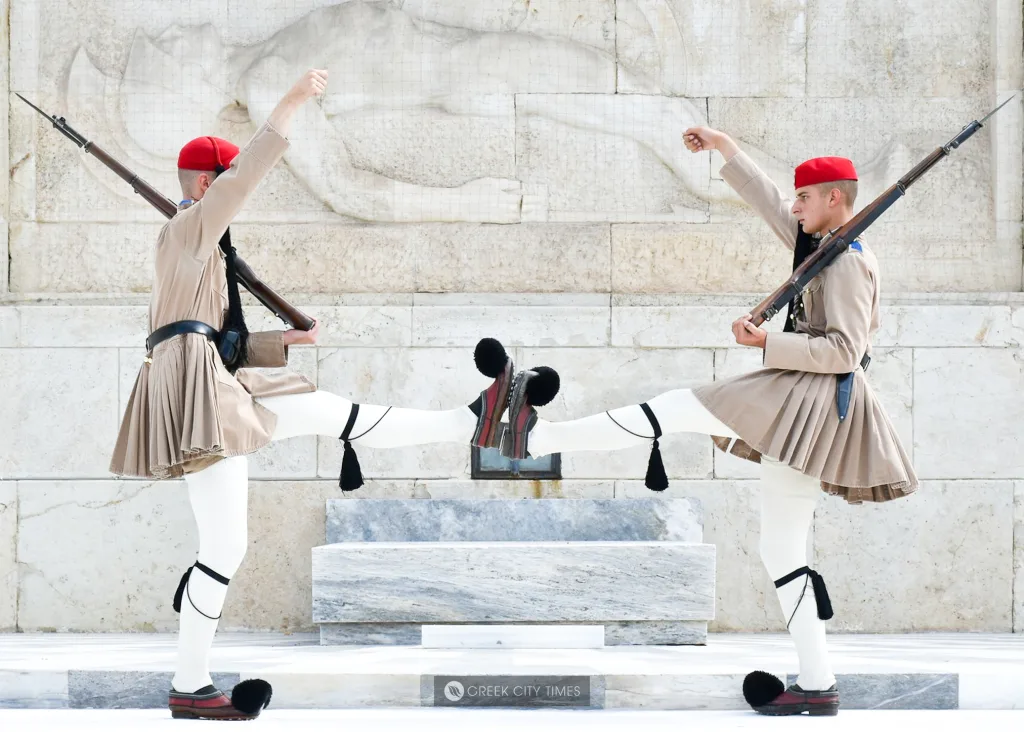
The Evzones form the Greek word “Όχι” with their bodies and guns. Their head is the letter “O,” their guns are the letter “χ,” and their bodies are the letter “ι.” So, they formed the word “No,” which symbolizes the “no” that Greeks said to all their enemies who wanted to conquer them.
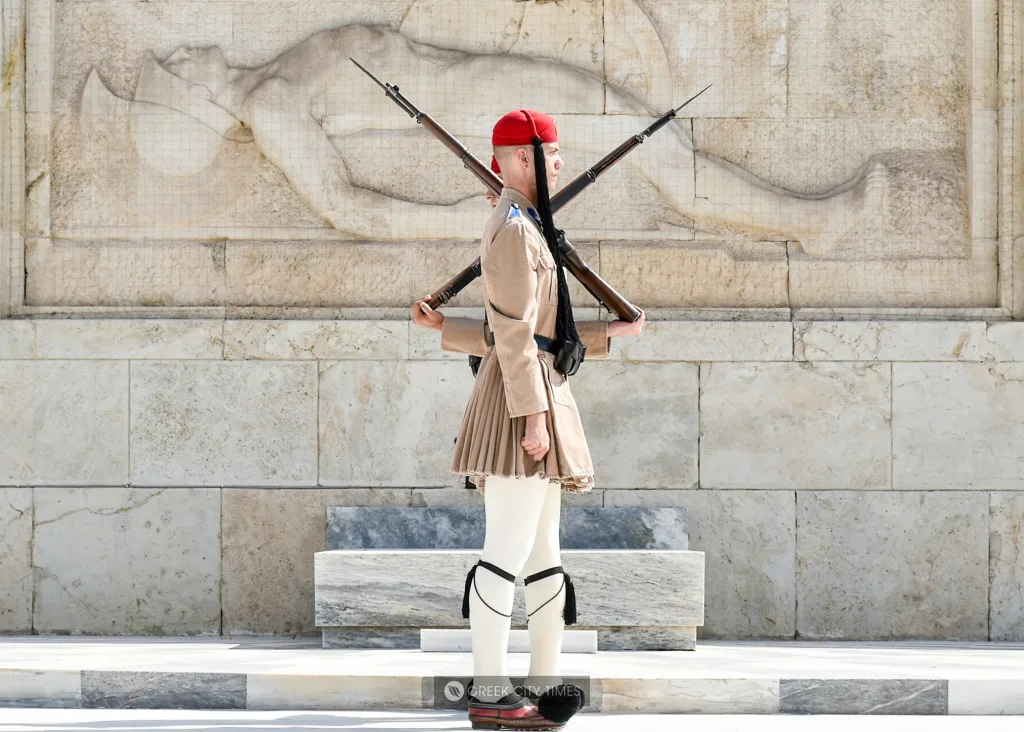
This move symbolizes that Greeks will overcome all the threats only if they are united and stronger together. Or as we say it in Greek “Ισχύς εν τη ενώσει” (“Ischýs en ti enósei”).
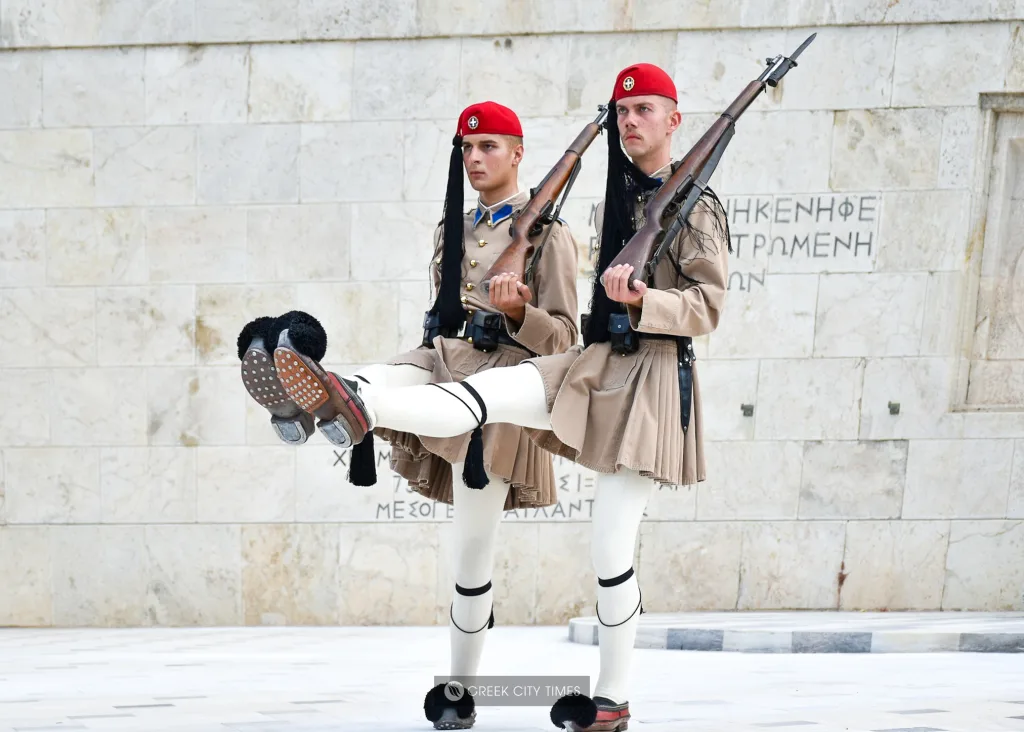
The Evzones raising and lowering of the Greek flag at the Acropolis on Sunday is a deeply symbolic and ceremonial tradition that underscores Greece's national pride, historical heritage, and the dedication of the Greek military to its country. The Acropolis, an ancient citadel and UNESCO World Heritage Site in Athens holds immense cultural significance as a symbol of Greece's democratic ideals and historical legacy.
The flag-raising typically occurs at 8 a.m. when the church bells ring throughout Athens, and the flag-lowering happens when the sun kisses the mountains on the Athenian skyline. The ceremony by the Evzones is a carefully choreographed event.
A bus takes a platoon of Evzones from the Garrison to the base of the Acropolis Hill, where they assemble to march in formation led by the captain and accompanied by a military band. The Evzones wear their distinctive uniform, including the fustanella, a white pleated skirt, a red fez with a black tassel, and white leggings. On arrival at the Acropolis designated flagpole area, the Evzones and band stand at attention in rows, and the three Evzones assemble at the base of a flagpole, two wearing the Cretan uniforms to raise and lower the Greek Flag.
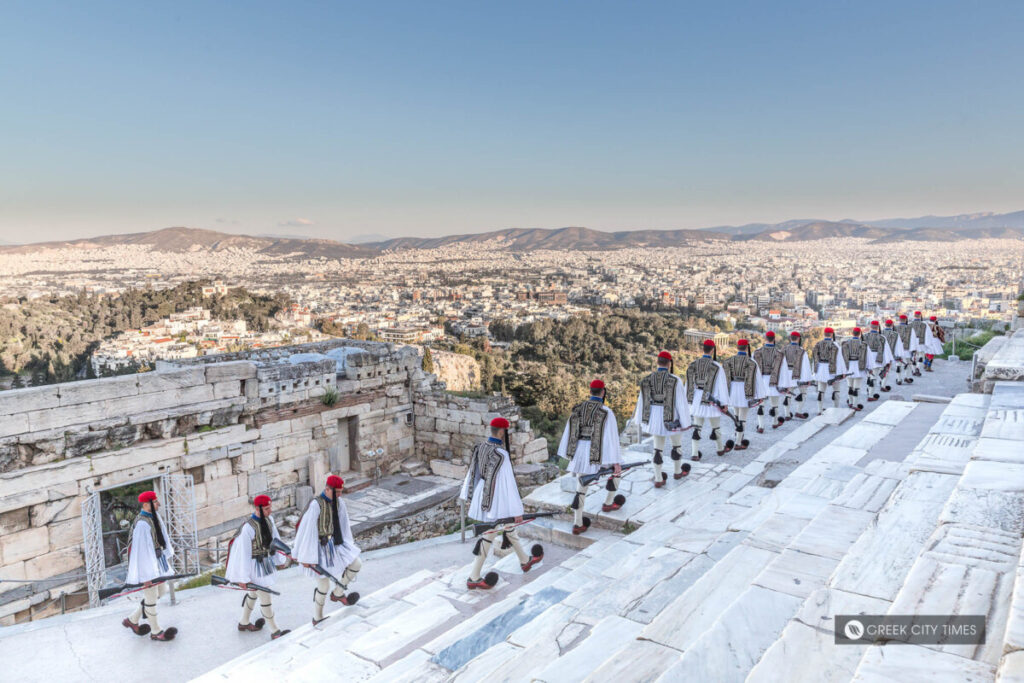
Every Sunday at 11:00 a.m., the ceremonial Changing of the Guards event is held in front of the Tomb of the Unknown Soldier in Syntagma Square. A military band leads the Evzones units as they march in perfect time down Vassilissis Sofias Street towards the Tomb of the Unknown Soldier at about 10.20 a.m. This is a remarkable sight to view while in Attica. You will be wholly astounded and inspired! The Evzones showcase their intricate and choreographed movements during the ceremony.
The resounding thud that occurs when the shoe strikes the ground is intended to reach the ears of our departed ancestors, reaffirming that their Greek descendants continue to thrive. The march features a high-leg lift accompanied by strength, including high-leg kicks and synchronized marching. The ceremony usually attracts tourists and locals, who gather to witness this display of Greek military tradition.
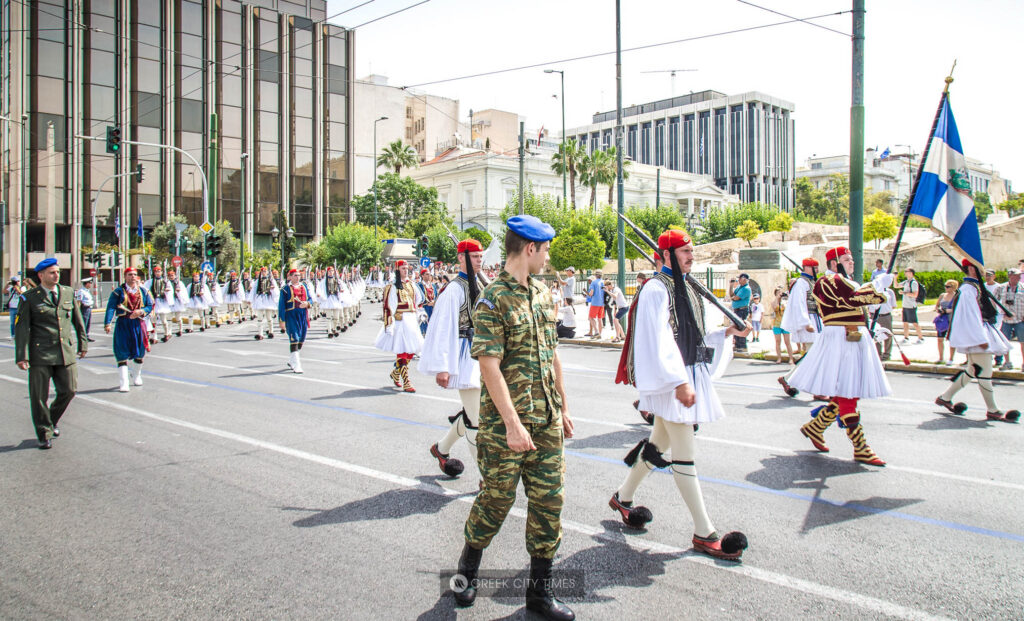
The meticulously handcrafted Evzones uniform, a testament to intricate artistry, unfolds over decades, encapsulating the essence of the nation's pride. This uniform symbolises the valorous battles etched in Greece's contemporary history and is a poignant representation of the nation's identity. A typical uniform needs about 80 days to be complete: the winter navy-blue overcoat (doulamas) – Inspired by the uniform worn during the Macedonian struggle, this garment is worn daily by the Evzones in the winter season. The summer khaki overcoat (doulamas) – Reflecting the uniform of the Balkan Wars, this attire is worn daily by the Evzones in the summer months. The Cretan uniform – Reserved for parades and official ceremonies, the Presidential Guard wears this distinct attire.
Furthermore, the wardrobe of the Presidential Guard includes a range of specific uniforms inspired heavily by traditional costumes representing various regions of Greece, such as the Pontian uniform based on the rebel outfit from Pontus, the Thracian costume from Thrace, and the traditional attire of the islanders in the Aegean Sea. The Evzones wear these costumes on special occasions, Memorial Day, and celebratory events.
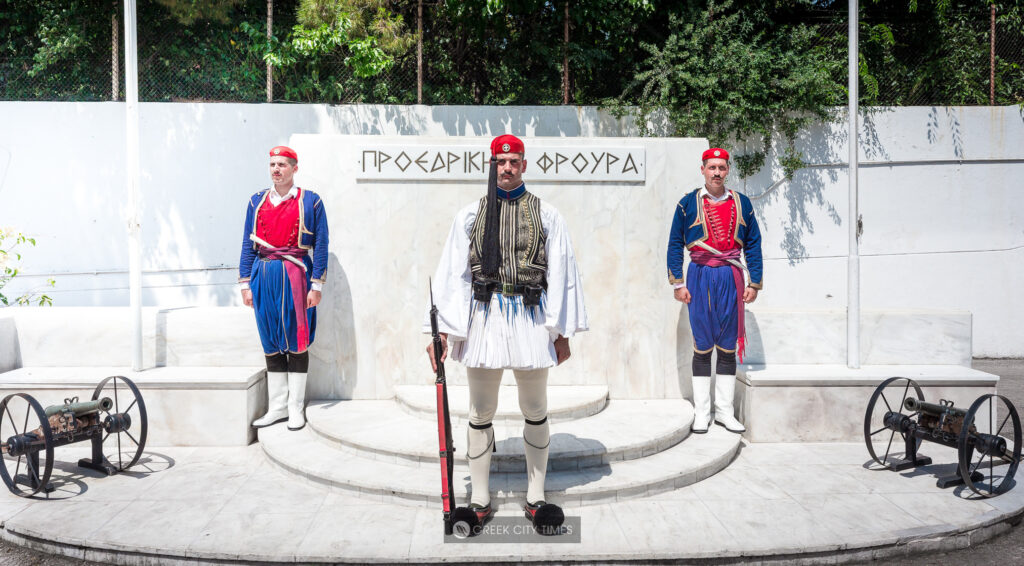
Crafting these uniforms involves a labour-intensive, meticulous process spanning over six months. Not every Evzone receives a custom-tailored uniform; instead, most inherit them. When an Evzone concludes their guard duty, they pass down their uniform to the incoming Evzone. Thus, each uniform carries its unique history, and wearing one is akin to becoming a part of that historical legacy. Wearing the uniform instils a deep sense of pride, an Evzone has great pleasure in suiting up for each watch shift and maintaining the cherished garments.
The Fustanella is the Evzones' uniform's most iconic and recognizable part. This white, pleated attire resembles a kilt and is made from 30 meters (98 feet) of white cloth. Remarkably, it boasts 400 pleats, symbolizing each year endured under Ottoman Turkish rule over Greece (1453-1821. By wearing the fustanella, the Evzones honour the memory of those who fought and survived oppression during this period while also embodying the resilience and enduring spirit of the Greek people.
The Krossia, which consist of braided fringes, are adorned in the colors of blue and white, mirroring the hues of the Greek Flag. The origins of the kilt-like garment known as the Foustanella have sparked debate among historians, as other Balkan countries like Albania and Bulgaria also have their own variations of this attire.
However, archaeological evidence provides some insight. Paintings on vases from the Byzantine era suggest that the Foustanella was already in use in Greek territories during the 12th century AD. Additionally, sculptures found in the Attica region depict kilt-like garments dating as far back as the 5th century BC, further affirming its historical presence in Greek culture.
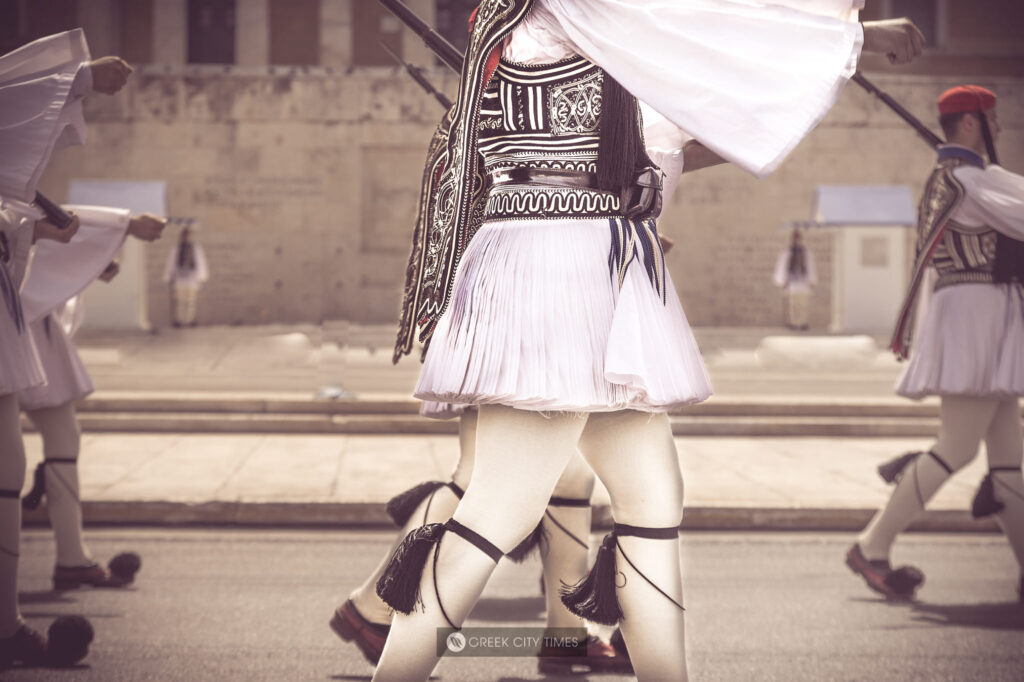
The Evzone wears the distinctive woollen Pharion, a red cap. This striking headgear symbolises the bloodshed of the fallen, while its long black tassel represents the tears shed by their grieving relatives during the war. This headgear originates in the military attire of the klephts and armatoloi, who were irregular soldiers in the Greek War of Independence. The kavoukli protected the head and neck from sword strikes, making it a symbol of bravery and defiance in the face of danger.
In contrast, the uniform worn on the islands, often referred to as the Cretan uniform, sports a shorter tassel. The exceptional length of these tassels can sometimes become entangled after a march or movement, prompting vigilant Evzones to maintain a particularly upright posture to avoid such inconvenience.
The front of these caps bears the Greek coat of arms, with the officer's rank displayed beneath it. During salutes, the Evzones elegantly extend their hand towards the coat of arms adorning the front of the Pharion cap.
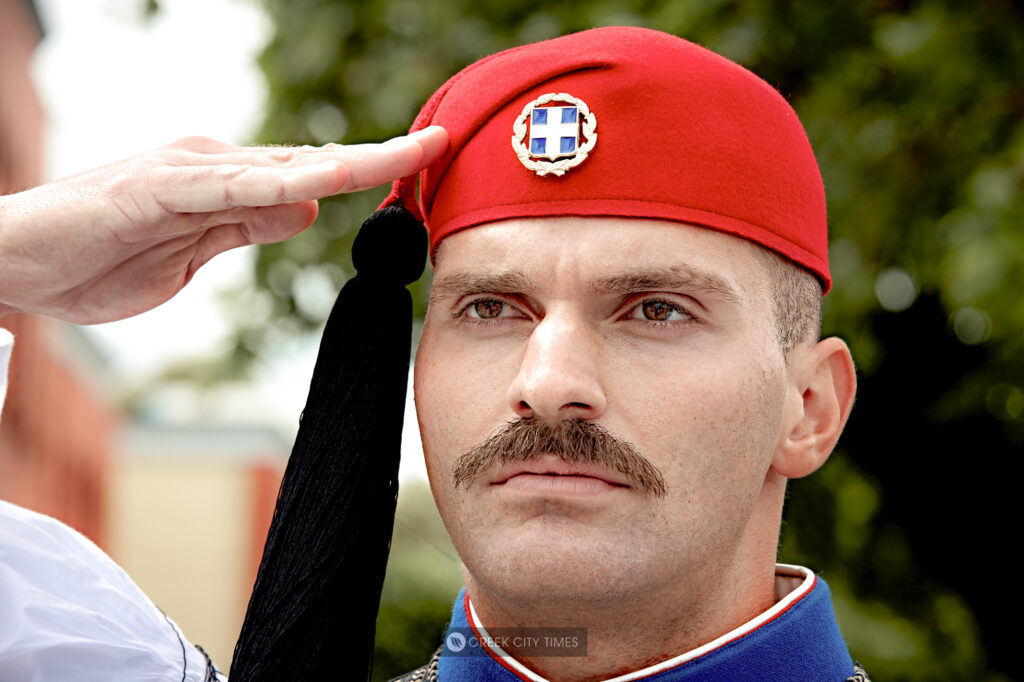
The waistcoat an Evzone proudly wears, The Fermeli (vest), holds deep significance and symbolism. Embroidered on its back are the Alpha and Omega, crosses symbolising Christ, and an emblem denoting infinity. The waistcoat is hand-embroidered, and it takes six months to finish it. The crimson colour found on the officers' phermeli represents nobility, while the gold braiding signifies luxury and prestige. The Fermeli's embroidery often features symbols like the double-headed eagle, an ancient emblem associated with the Byzantine Empire, reflecting the continuity of Greek civilisation. Other motifs, such as laurel wreaths and Greek key patterns, further emphasise Greek cultural heritage.
Crafted entirely by hand, using wool, it showcases thousands of stitching holes concealed on the inner side of the waistcoat. This painstaking embroidery process can span several months, and the resulting garment can endure for up to a decade. Moreover, the Fermeli serves as a means of distinguishing the rank of an Evzone. However, identifying these distinctions requires a discerning eye, as they are subtly indicated by stripes discreetly placed at the back right tail of the coat: one stripe for a Corporal, two for a Sergeant, and none for Privates.
The 'wings' of the Fermeli, on which the rank insignia are sewn, were worn as sleeves back in the day until pre-war Greece. Therefore, the rank insignia was placed there as adorned by the French army. (and as was the fashion of the era, that was inspired by the then superpower).
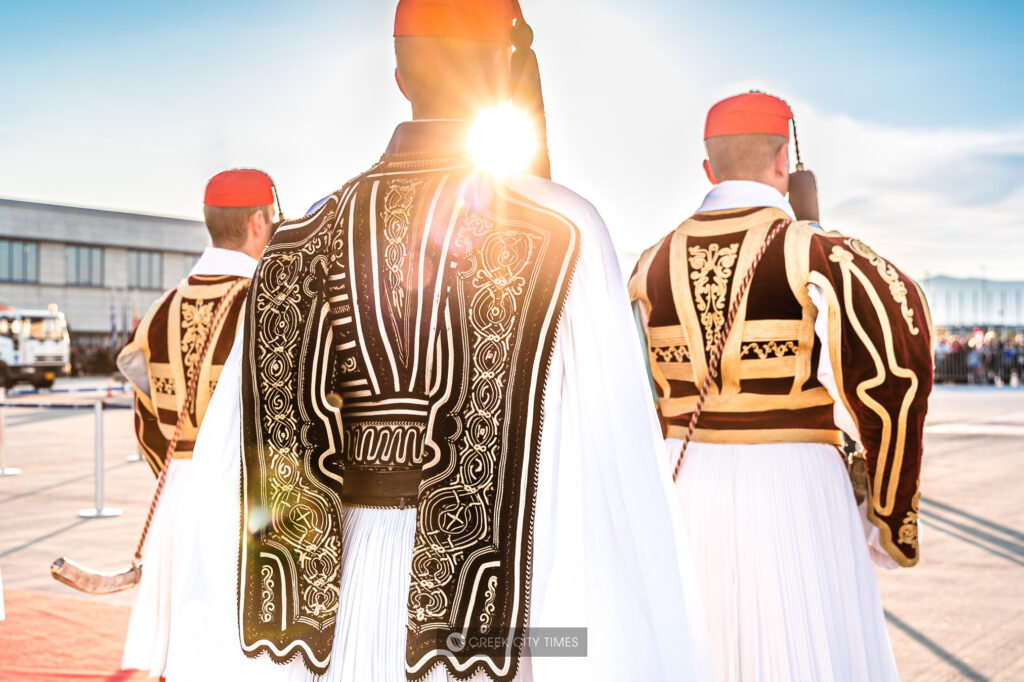
The Ypoditis (shirt), also known as the Ypodima, is a distinctive and traditional Greek military uniform worn by the Evzones, an elite unit of the Greek Presidential Guard. This uniform is functional and carries deep cultural and historical significance. One of the most noticeable features of the Ypoditis is its extremely wide sleeves. These sleeves are so voluminous that they billow dramatically as the Evzones march. The width of the sleeves is said to symbolise the purity of the national purpose. The Ypoditis is typically white, which represents purity and honour. The bright white colour is intended to evoke a sense of national pride and dedication.
Button-Down Long Sleeve: Underneath the wide sleeves is a button-down long sleeve extending to the wrist. This inner sleeve is more practical for daily wear and provides the necessary coverage and comfort for the Evzones.
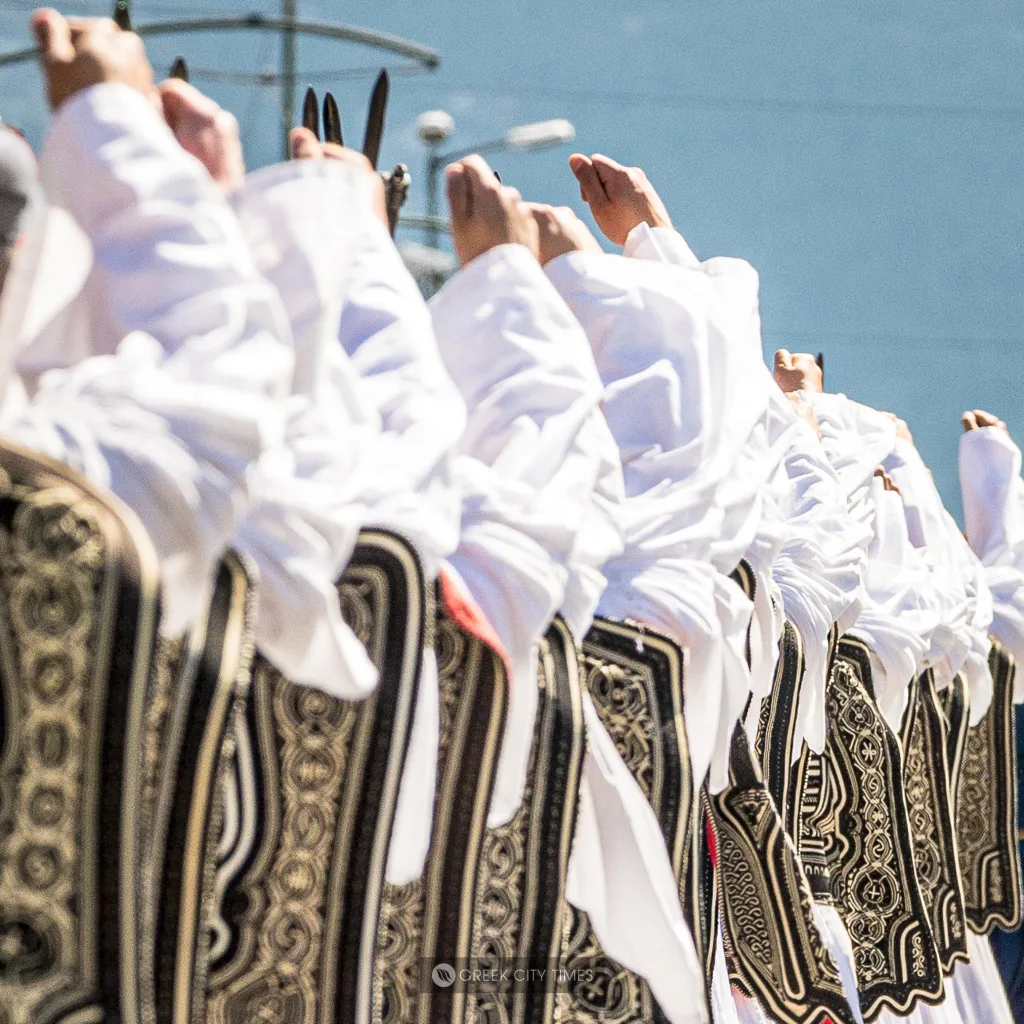
The Evzones wear special shoes called Tsarouhi, handmade from red leather with black pom-poms on the toes. These shoes have historical significance and add to the overall striking appearance of the uniform. Each pair weighs about 3 kilos or 6.6 pounds, with 60 to 120 nails and only one petal can be worn on a Tsarouchi which is attached to the sole. If for some reason it's worn or falls off it gets replaced and, in that case, several petals might accompany the shoe during its service lifetime.
The red colour of the Tsarouhi represents the blood shed by Greek soldiers during their fight for independence. The black pom-poms have multiple interpretations; some say they represent the ashes of the cities burned by the Ottomans, while others believe they symbolise the mourning for fallen heroes. The Tsarouhi serve as a reminder of the sacrifices made by the Greek fighters in their struggle for freedom.
The shoe's foundation is crafted from cowhide, with each shoe meticulously assembled using more than 300 hand stitches. On each leg, the Evzones don two pairs of Periskelides made from woollen stockings. These stockings are kept in place by Epiknemides, silk garters adorned with tassels.
When the shoe touches the ground, it emits a resounding noise. This carries a symbolic message: our forebears, resting beneath the earth, can perceive that sound, affirming the continued presence of their descendants.
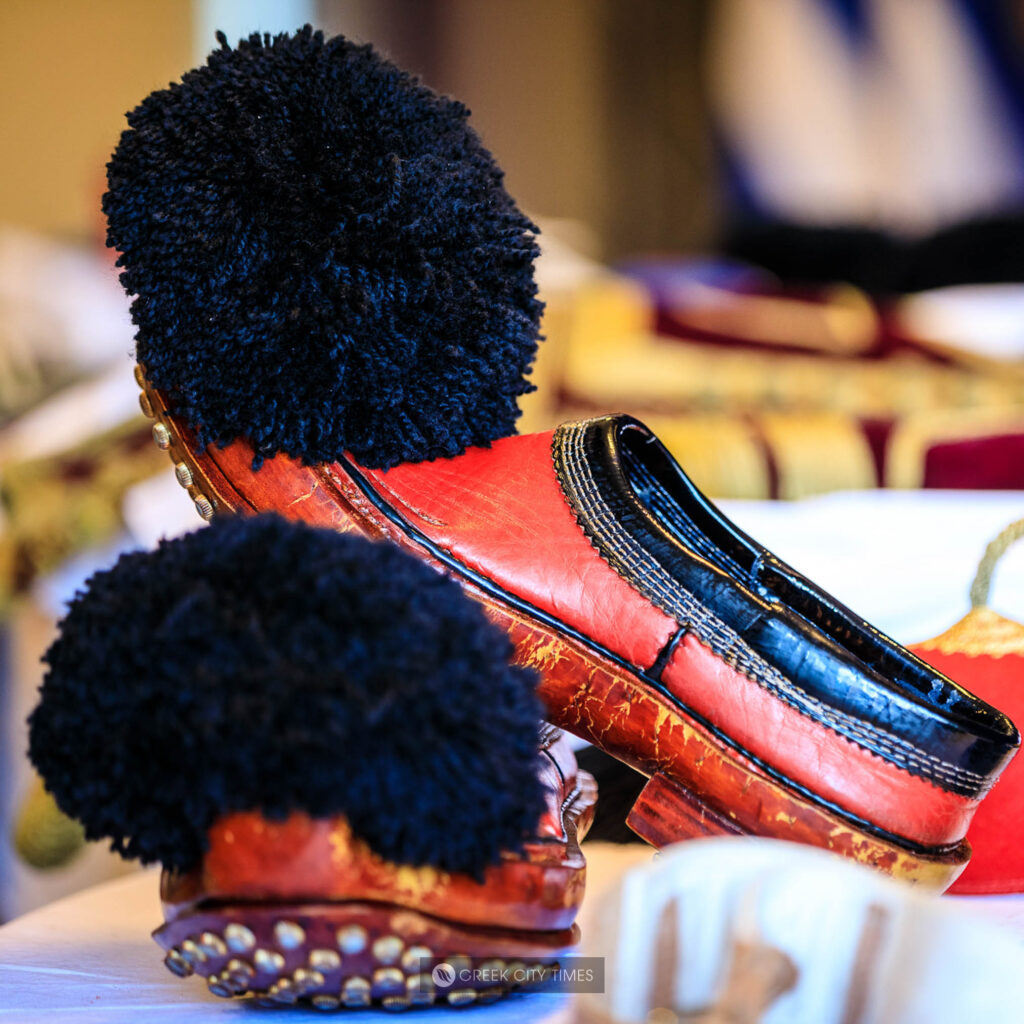
An Evzone proudly wields the M1 Garand rifle, a hefty firearm tipping the scales at more than five kilograms. This weight exerts considerable strain on their bodies as they firmly press it against their shoulders after each precise movement. However, this rifle serves a vital purpose beyond ceremonial duties. The soldier on active duty, clad in military attire, provides essential support to the Evzones throughout their service by managing crowds, adjusting their uniforms, and ensuring their well-being during extended hours, whether under the scorching sun, frigid cold, or pouring rain. A sharp tap of the rifle butt against the ground signals that the Evzone requires assistance. The leather belt secures both the cartridge pouch and the bayonet, while the epiknemides are elegant black garters crafted from silk.
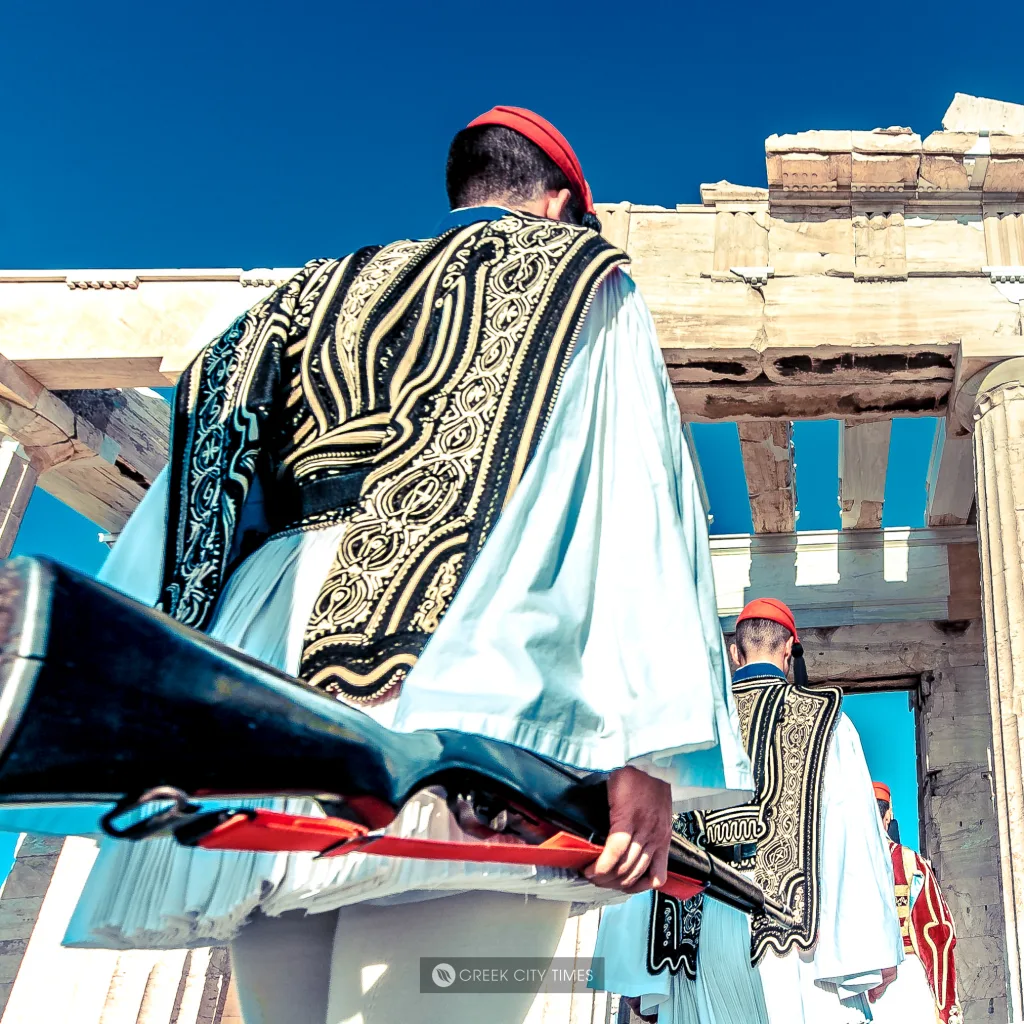
The everyday attire of the non-ceremonial Evzones is typically worn from Monday to Saturday, except on special national occasions or when hosting dignitaries. This uniform consists of the doulama, a tunic-like garment paired with tsarouchia (shoes), epiknemides (stockings), the farion cap, and the Garand gun.
During the summer, the uniform adopts a khaki hue and is crafted from cotton, while the winter version is made from navy blue wool. The roots of the winter uniform trace back to the Macedonian Struggle of 1904.
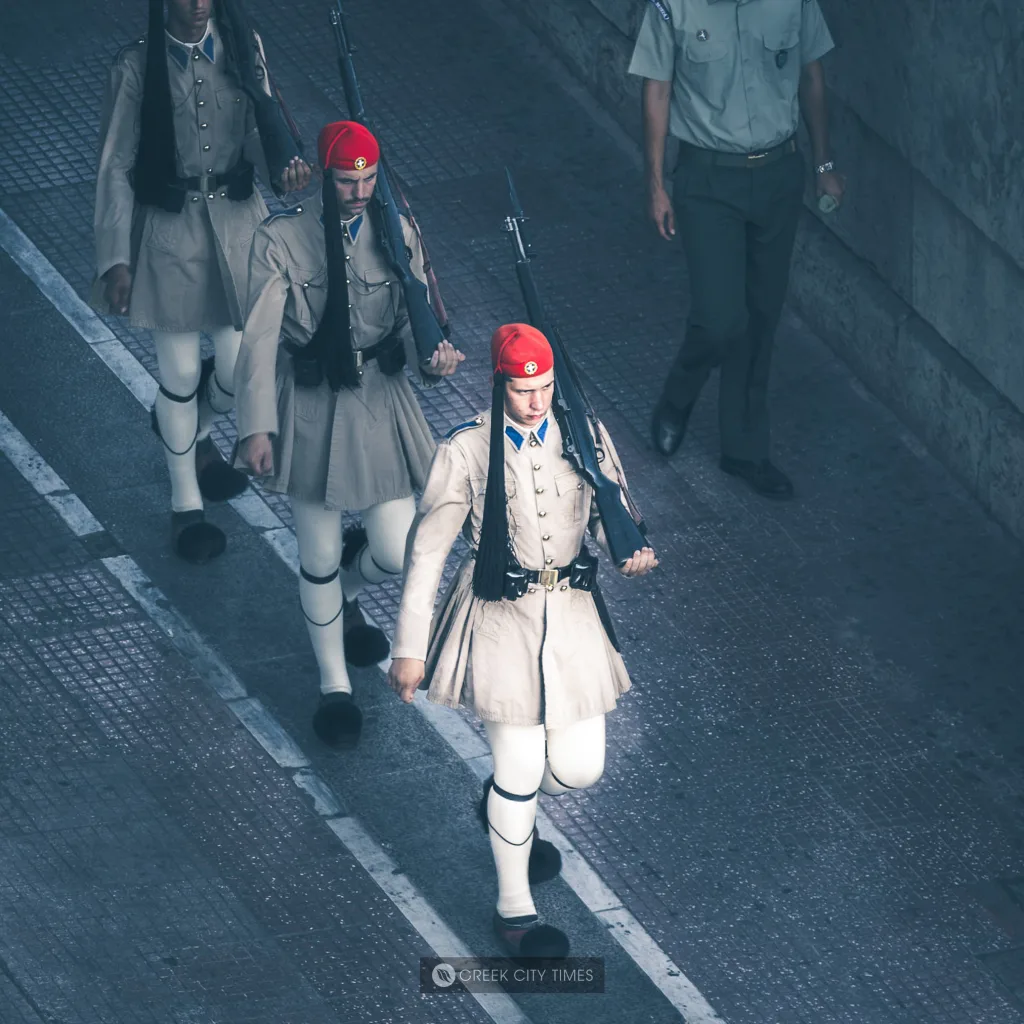
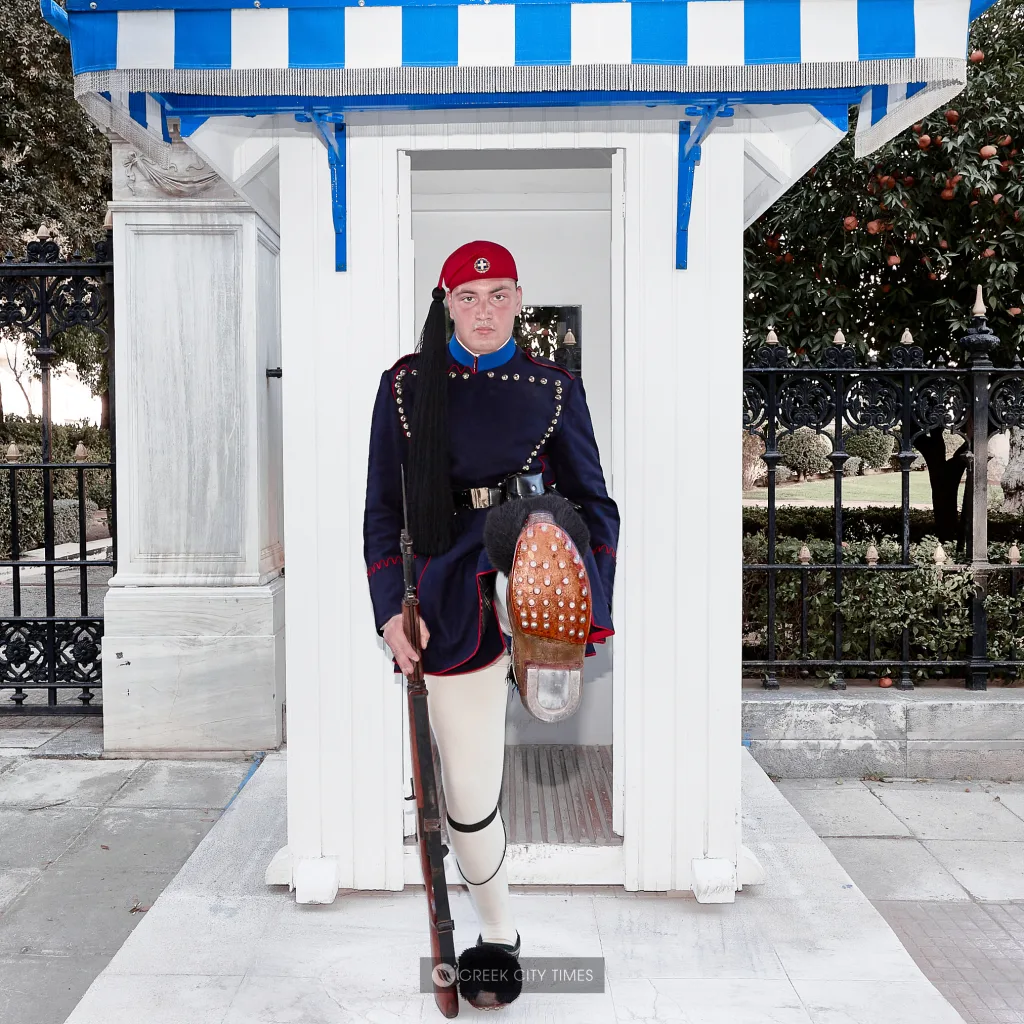
The Island's uniform draws significant inspiration from Cretan traditions. It is reserved for Sundays and special events, symbolising respect and recognition for mainland Greece and the islands' historical struggles. Those wearing this attire are referred to as Vrakoforos, in line with the tradition of naming island-specific uniforms.
This distinctive uniform comprises the Cretan coat and vest, the Cretan battle knife, eye-catching blue breeches, and white leather boots. Additionally, on the 19th of May each year, the Evzones wear a black Pontic uniform as a solemn tribute to commemorate the Pontic genocide.
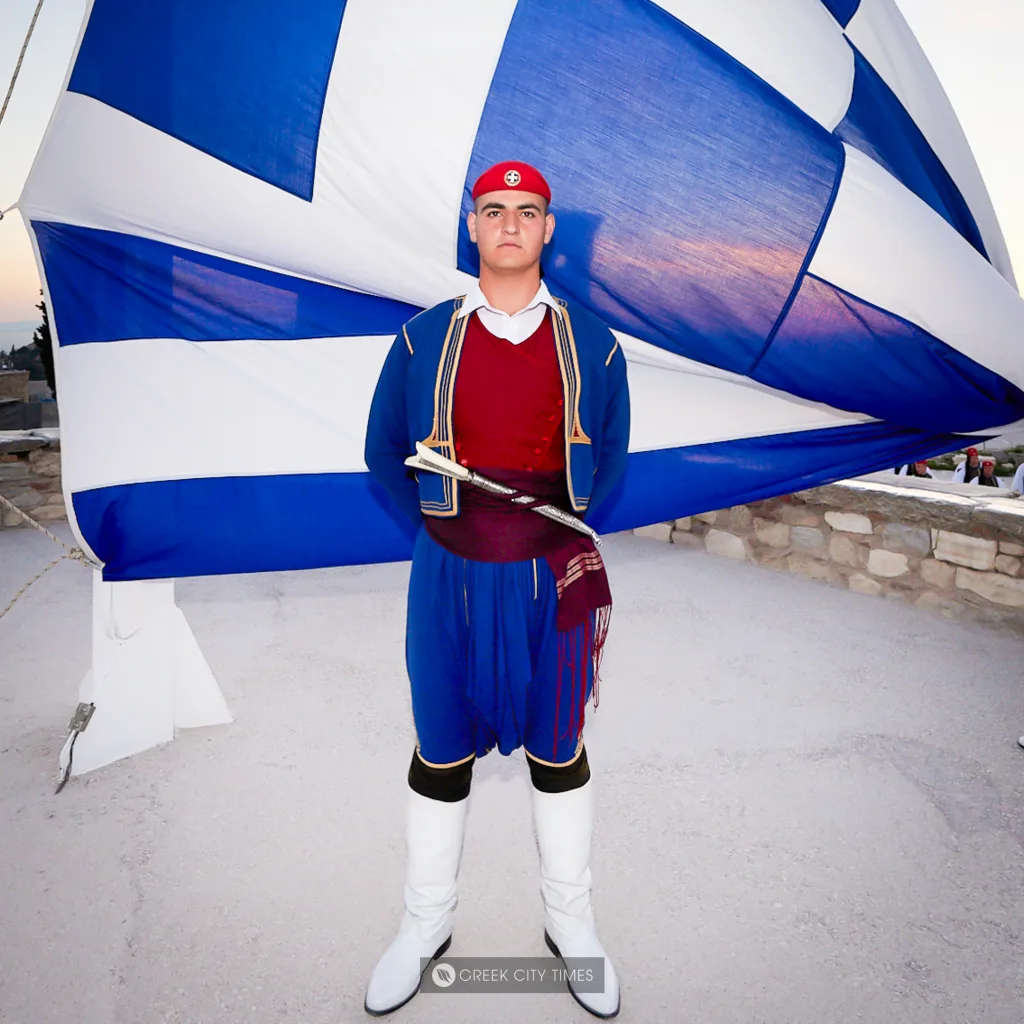

The officer's uniform of the Evzones is characterised by its unique and vibrant appearance. The knee-length Foustanella is adorned with an impressive 400 pleats, while the Fermeli stands out in royal purple with intricate gold embroidery. Completing the ensemble, the Epiknemides (stockings) are striking red, paired with knee-high boots featuring a combination of red and gold hues. Blue silk garters add an elegant touch. Additionally, the officer carries a traditional sabre dating back to the 1821 War of Independence. The Farion cap displays the officer's rank beneath the Greek coat of arms, adding a distinguished touch to the uniform.
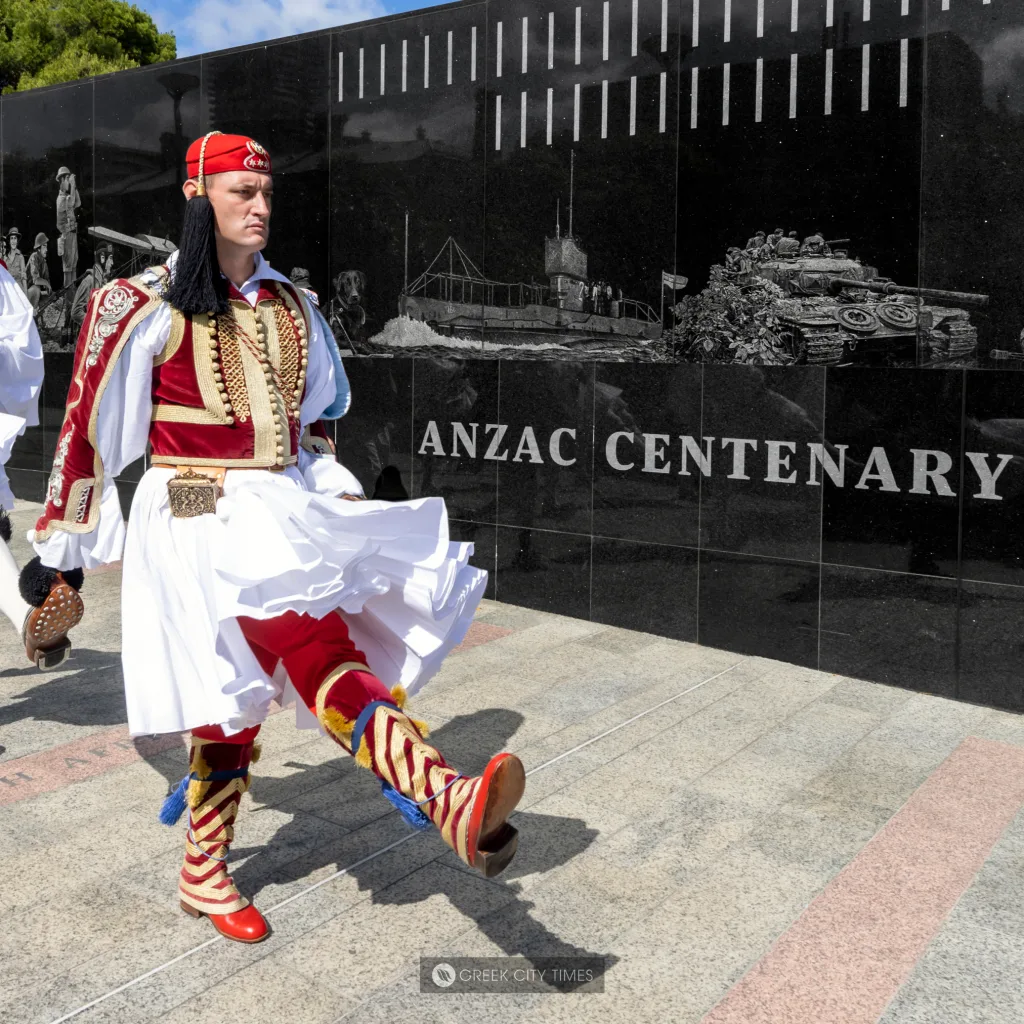
In Athens, Greece, the Guards undergo a change every hour, marking the passage of time 24 hours a day, 365 days a year. Observing the Changing of the Guards in Athens ranks among the city's top attractions, offering a free and captivating experience. Every day, hundreds of tourists gather at Syntagma Square to partake in this hourly traditional ceremony. Even if you've never set foot in Greece, you've probably encountered photos or videos of this iconic event. It's a beloved activity for visitors, consistently drawing a crowd eager to witness the Guards in action.
What sets the Guards' changing in Athens apart is its unique significance. For some, it prompts profound contemplation; for others, it presents an opportunity for charming photos. Pause and observe this captivating tradition for a few minutes, regardless of your perspective.
Exploring the Evzones Garrison: Colonel Ilias Karmiris leads a tour as shown in the photo gallery below.
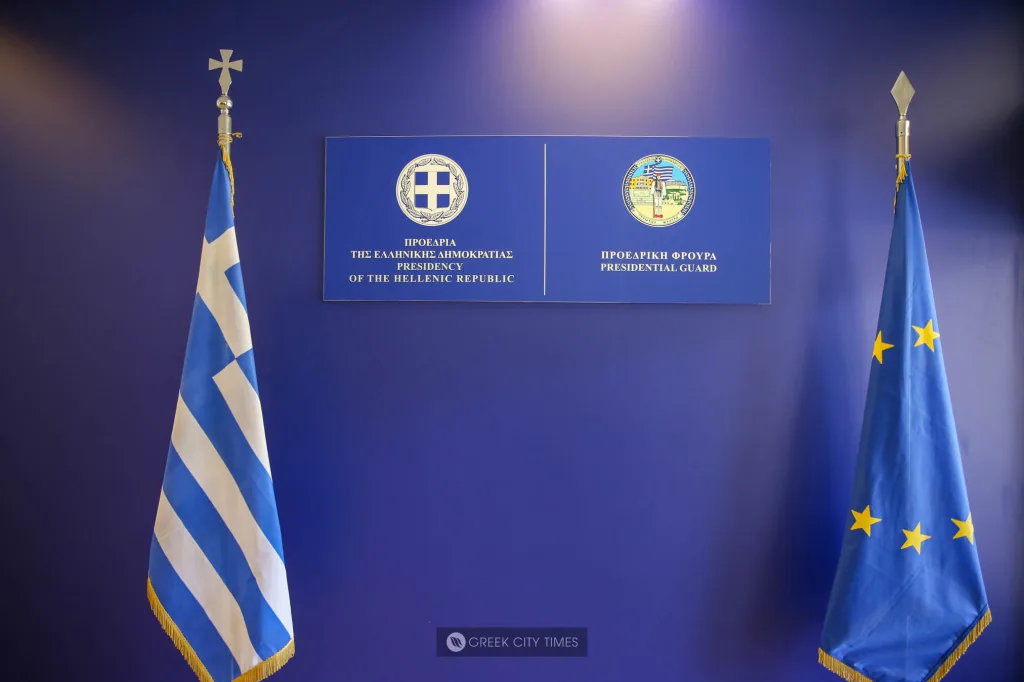
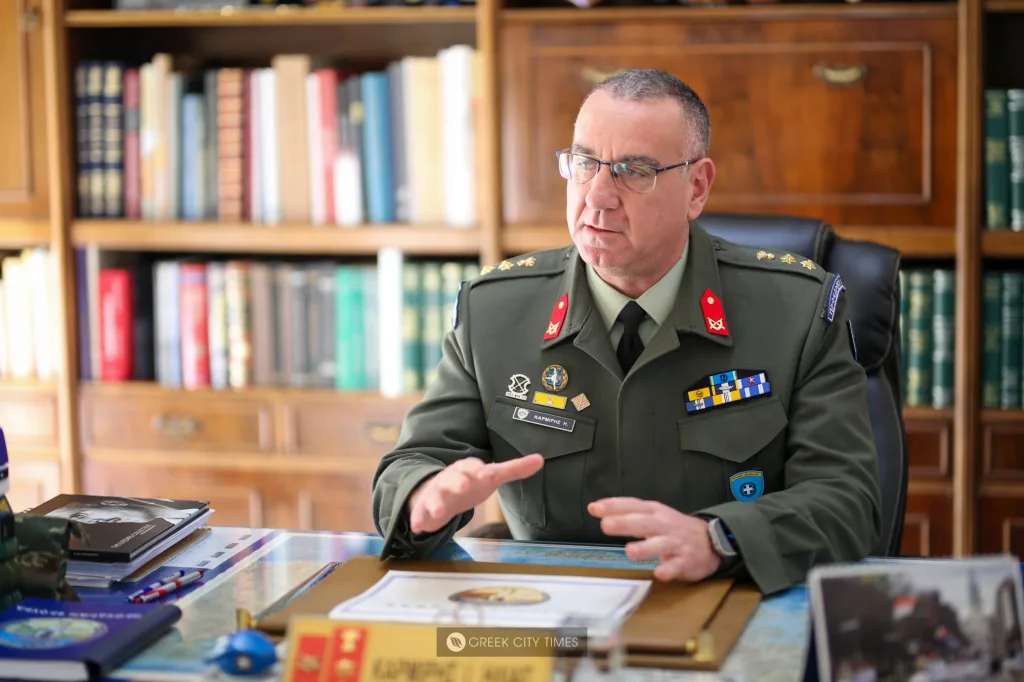
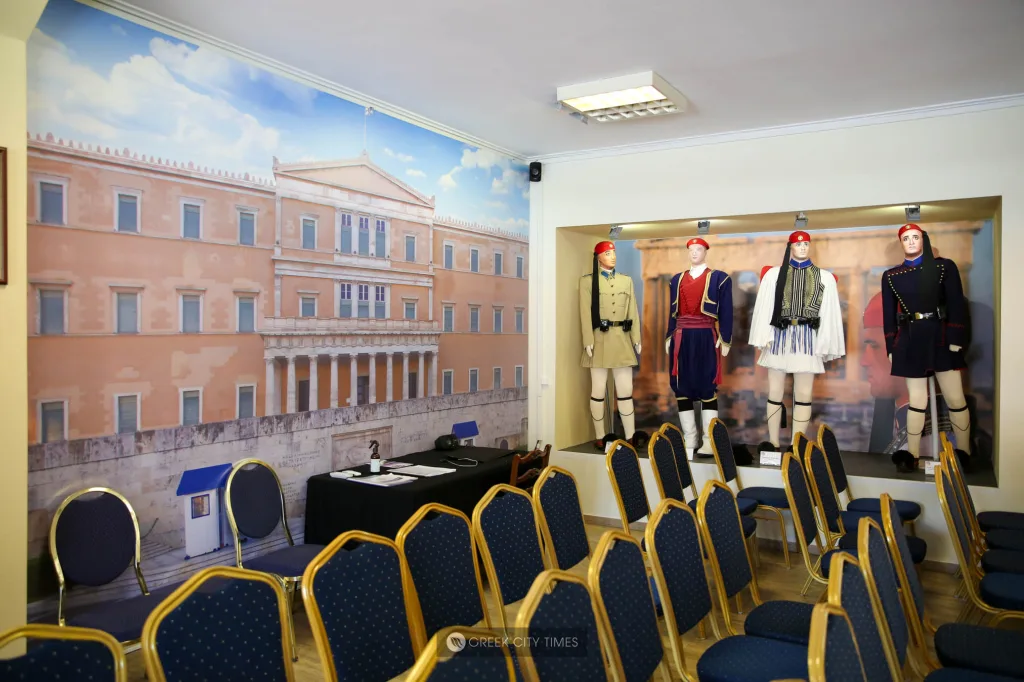

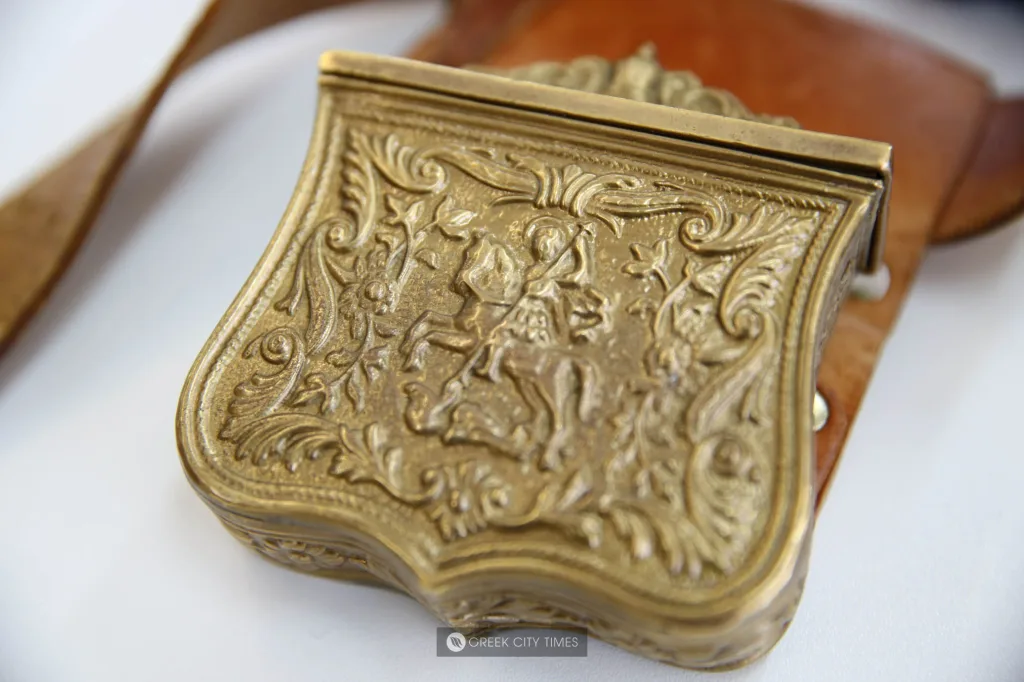
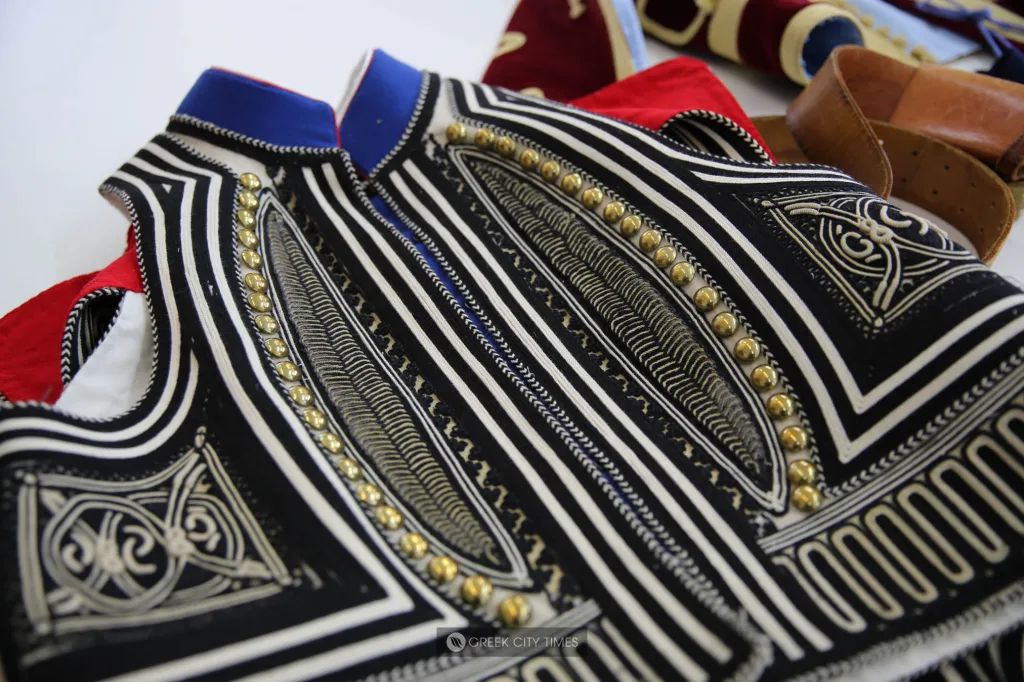
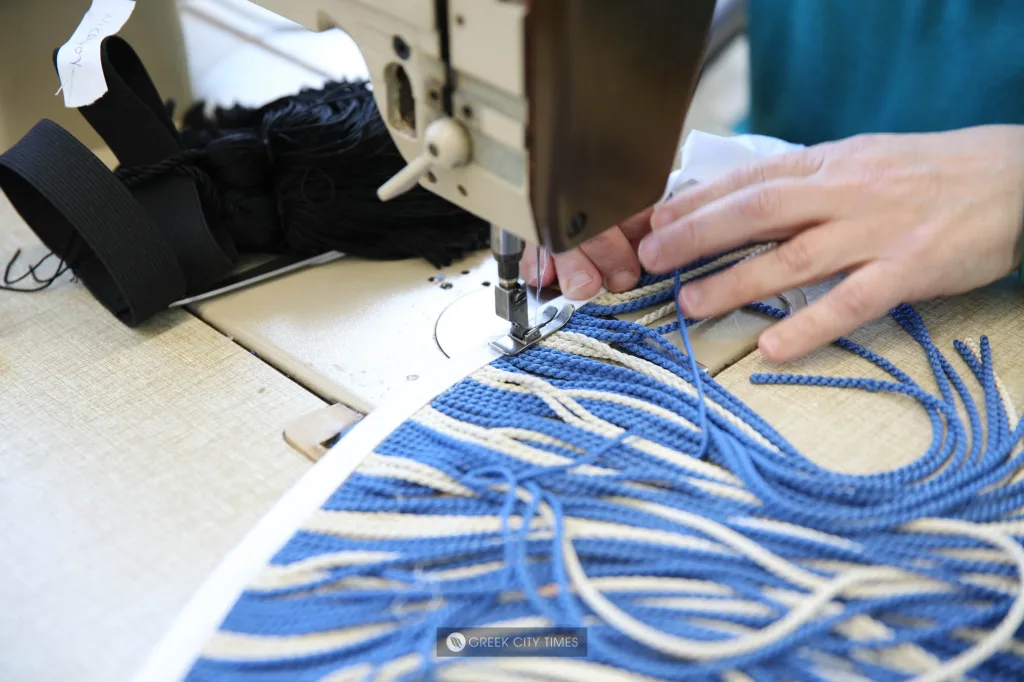
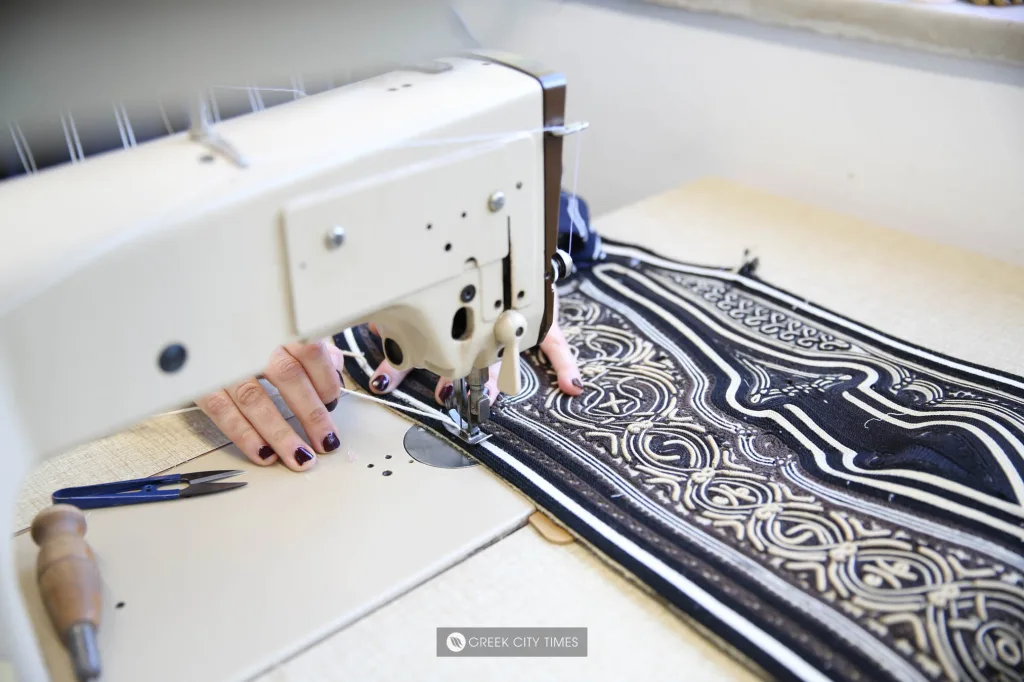
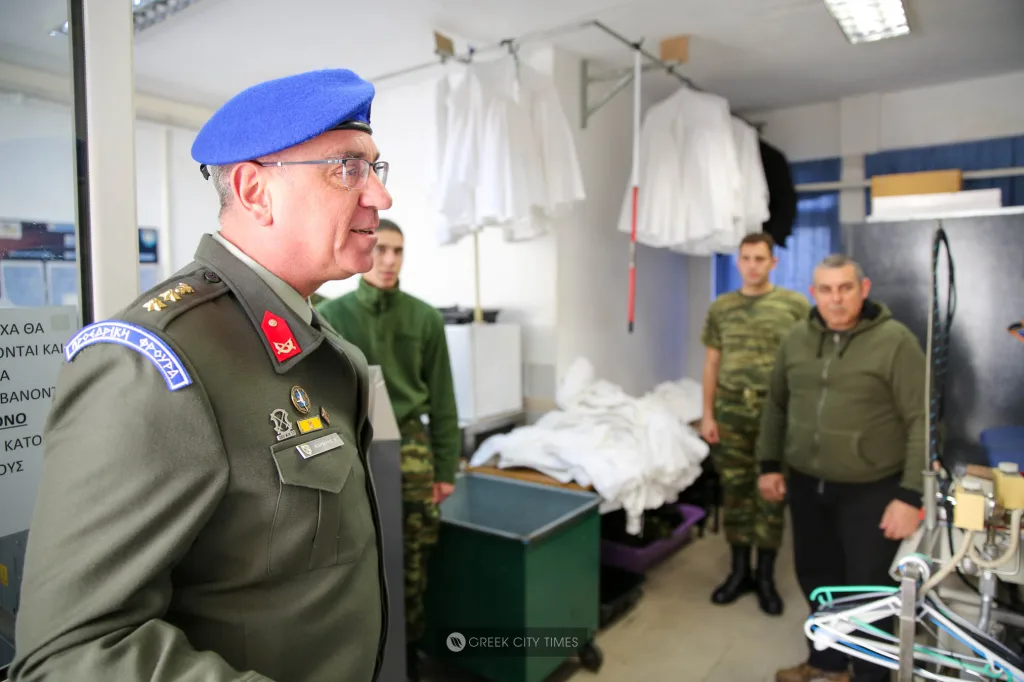
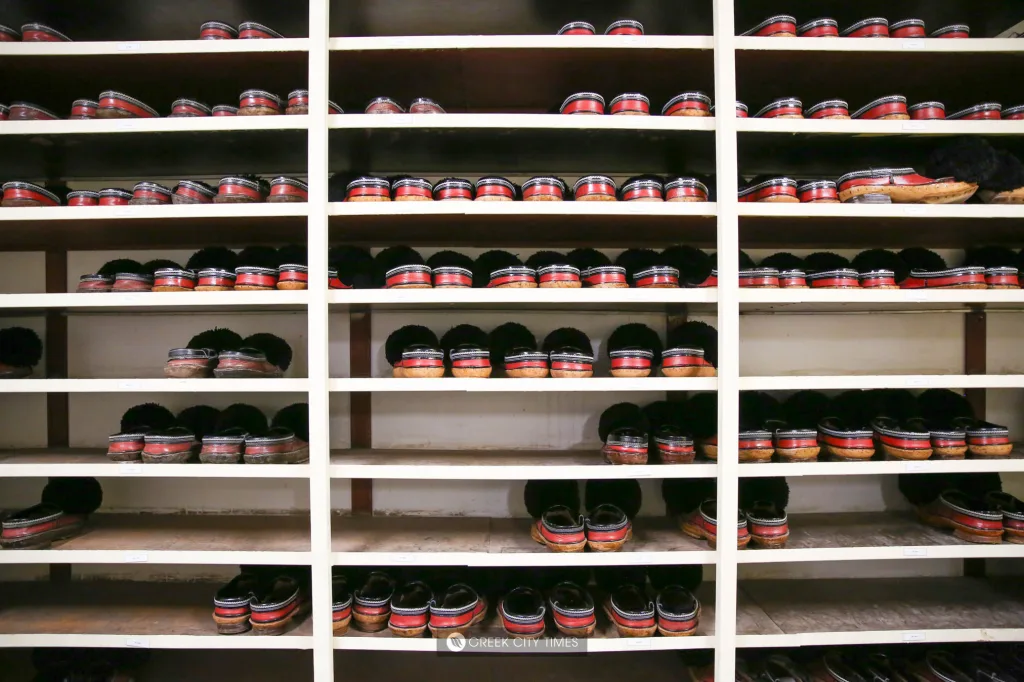
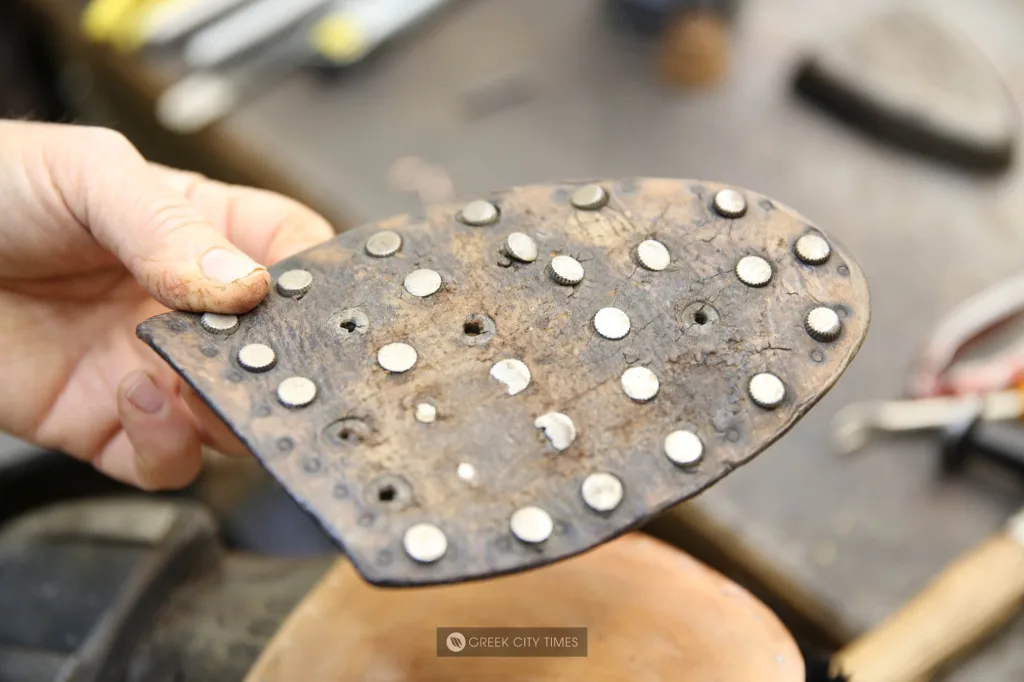
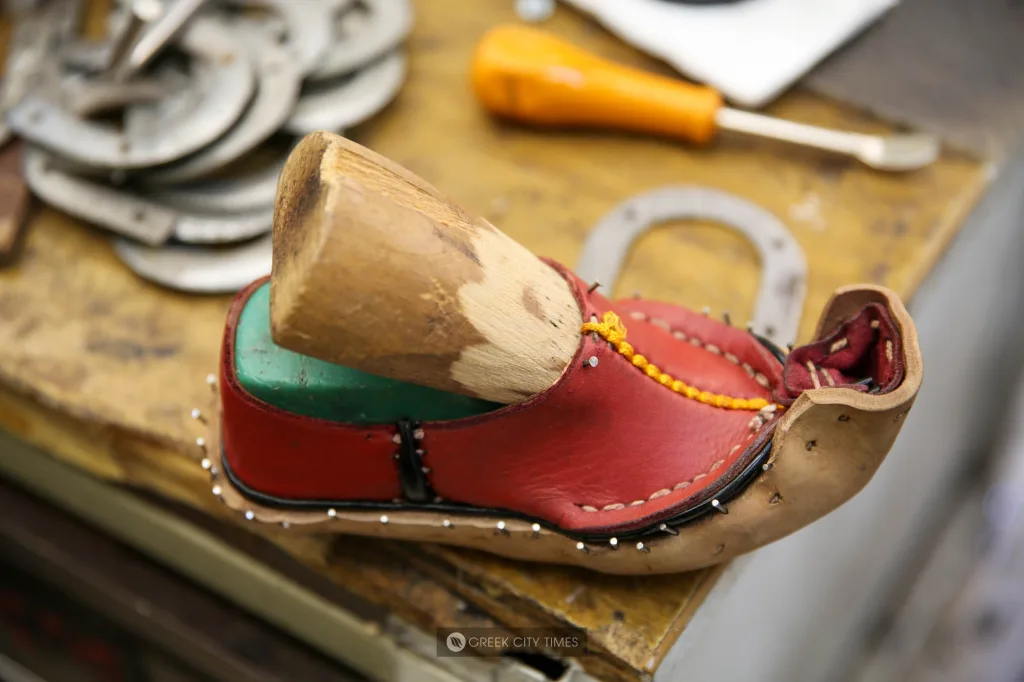
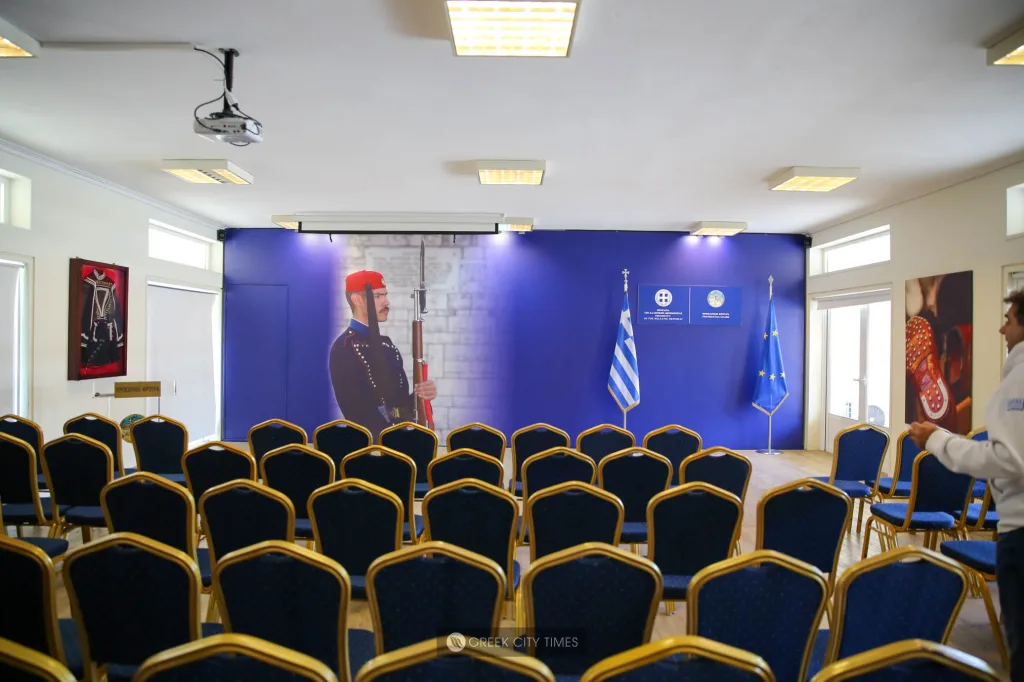
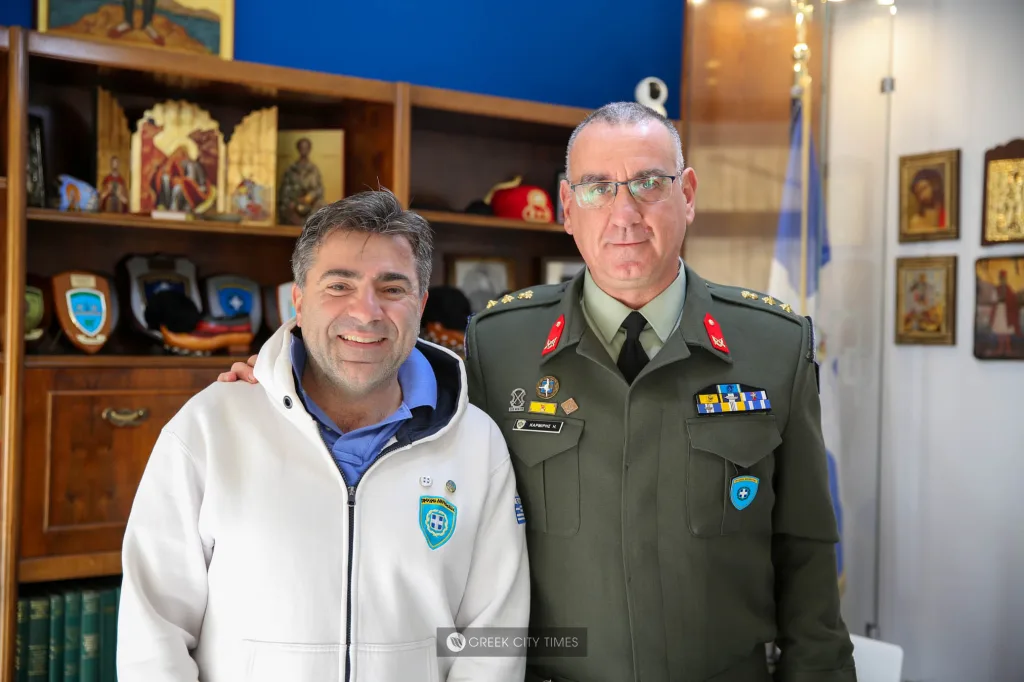
The Σύλλογος Ευζώνων Π.Φ. (Hellenic Presidential Guard's Evzones' Society) is an organisation composed of veterans and former members of this prestigious unit. Such associations are common in many countries and support maintaining traditions and camaraderie for military veterans who have served in specific units. These associations often participate in various events and activities, including historical re-enactment to the parades and other ceremonial functions. They also work to preserve the traditions and history of their units.
In conclusion, the role of the Greek Presidential Guard (Evzones) extends beyond ceremonial duties to become a symbol of national pride, cultural heritage, and historical continuity. Through their vigilant guarding of the Tomb of the Unknown Soldier and participation in significant events, the Evzones honour the memory of fallen heroes, preserve Greek traditions, and foster a deep connection between the Greek people and their past. Their unique and iconic presence continues to inspire respect, unity, and admiration both at home and abroad, making them an integral part of Greece's cultural and national identity.
Photos copyright: Nick Bourdaniotis / George Karantonis / Pantelis Xistros / The Evzones Collection

